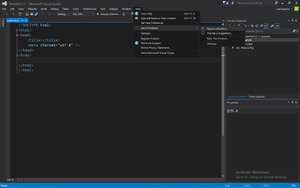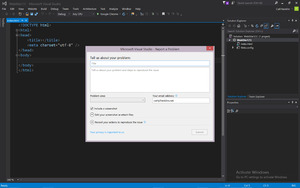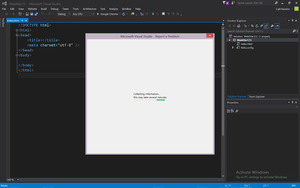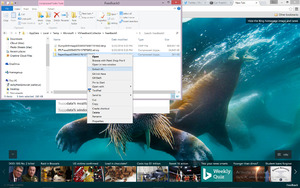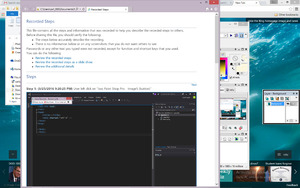Visual Studio 2015 has some hidden gems, none the least of which is this very cool subsystem for reporting a problem. You can actually make a screen recording while reproduce the problem. VS packages up screen shots and system information in a zip file and sends it to the mothership.
The coolest part is that you can hack into this system and access the data before it gets sent. This is cool for the sake of learning how stuff works under the hood, but also to get some technical details about what's going on that can actually be helpful.
To start, Select the following menu tree: Help, Send Feedback, Report a Problem.
On the screen that comes up, click on the button next to "Record your actions to reproduce the issue."
Next, click the "Start Recording" button.
The "Steps Recorder" dialog pops up. Now, go ahead and reproduce the issue. You'll notice that as you click with the mouse and type with the keyboard, a little red circle on the screen indicates that this step was recorded. Note that all of your screens are being recorded. If you have two or more monitors, you may want to check to see if there is any sensitive or personal data currently on screen.
When you are done, click the "Stop Record" button. Another dialog tells you to please wait while everything is assembled.
When the process is complete, you get a report screen that might look like this:
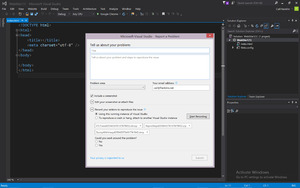 At this point, before you click the "Submit" button, you can check out the report that was created.
At this point, before you click the "Submit" button, you can check out the report that was created.
Navigate with the Windows Explorer to %AppData%\Local\Temp\Microsoft\VSFeedbackCollector\
You will see a folder named feedback0. There may be others there if you've used this feature before. If you sort by date, you'll see the latest folder that was created. Inside that folder lies a zip file containing the report. It will start with the words "ReproSteps." Extract it to see the report inside.
The .mht file contained in the zip contains your report, complete with screen shots. You can double-click on it to see the report in Internet Explorer
